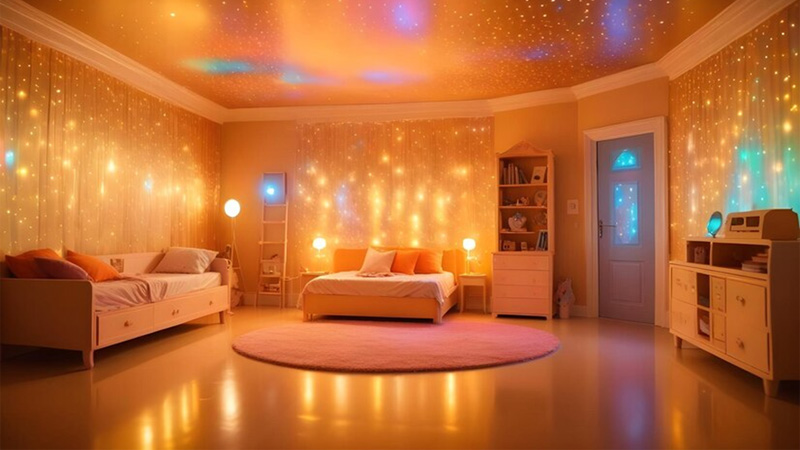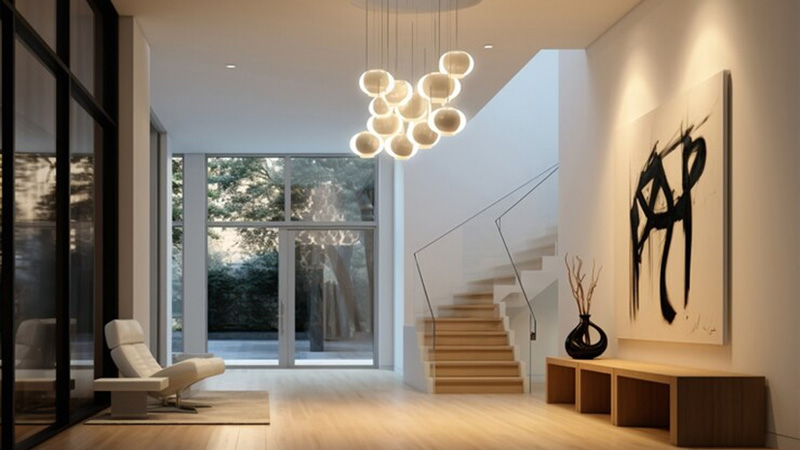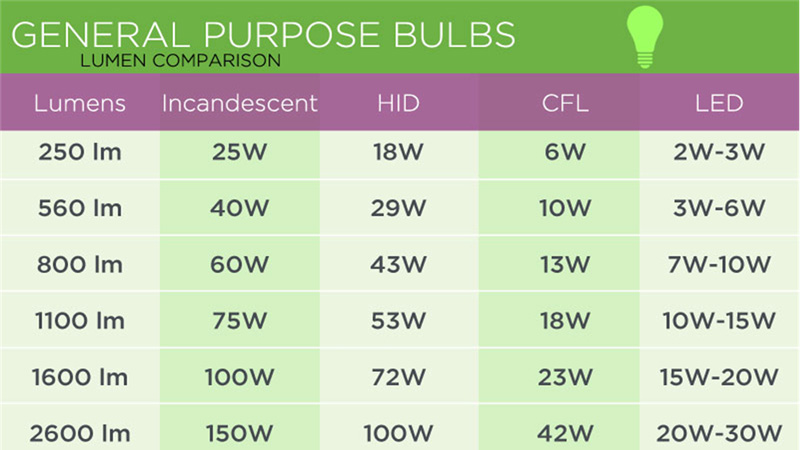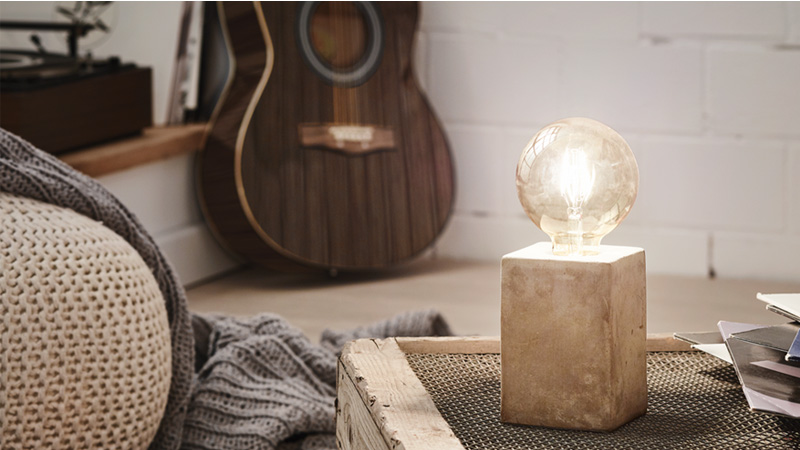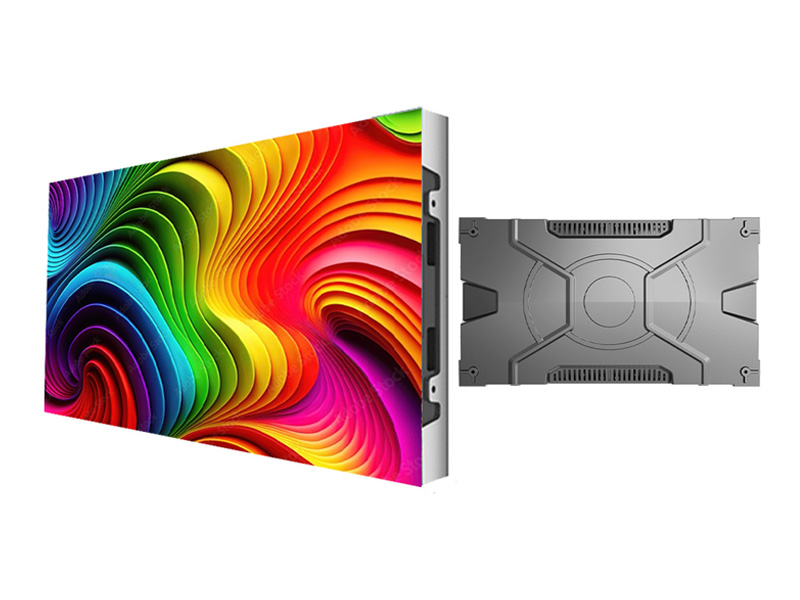LED Lumens to Watt: How Many Lumens Does Your Display Need?
If you’re wondering whether people still use wattage to measure the intensity or brightness of your lighting fixtures, then we’re about to burst your bubble! You see, lights and bulbs manufacturers as well as scientists don’t use wattage as a unit of measurement. So, what do they use? Well, lumens, of course.
For countless years, people have been under the misconception that lighting fixtures (such as bulbs, tube lights, etc.) should be purchased according to their respective wattage.
However, thanks to continuous innovation in the lighting industry, we now have a variety of incredibly efficient and energy-saving lights, mainly CFLs and LEDs.
Today, manufacturers incorporate a high degree of sustainability, efficiency, and effectiveness in their products, providing long-lasting and energy-efficient lighting products for both residential and commercial needs.
Considering this, we’re going to talk about why lumens are a more suitable unit for measuring the total brightness of any lights as opposed to wattage and help you understand the total amount of lumens you’ll need for your setting.
Lumens are used to measure the brightness of LED bulbs for a more accurate reading. The main concept behind using lumens to calculate the brightness of lighting fixtures is entirely different compared to how watts were used.
Watts are essentially used to calculate the total amount of energy that a tube light or bulb consumes while lumens represent the total amount of brightness illuminated by those same products. So, in essence, the more lumens there are in your lights, the brighter they will be.
-
Understanding the Definition of a Watt
Watts are used for a different purpose. They aren’t used to measure the level of brightness of any light unlike lumens, instead, they are used to calculate the amount of energy that a product consumes.
This is also evident in the fact that whenever you pay your electricity bill, you’ll pay according to the number of watts you have consumed. Simply put, if your light bulb has 30 watts, it will consume 30 watts of power.
However, with the prevalence of lumen-powered lighting technology such as LED and CFL lights, watts are no longer used to measure the brightness of modern lighting fixtures as homeowners prioritize brightness with high energy efficiency. One of the best things about LED bulbs is that they provide better and brighter illumination and consume minimal watts.
-
Lumens to Watts: Important Things to Know
So, is it possible to find out the number of lumens in a single watt? Well, you must understand that lumens are essentially used to calculate the amount of brightness produced by a light bulb. This also means that there can’t be a precise or reliable way to convert lumens into watts or vice versa.
With the popularity of CFL and LED tube lights and bulbs, the number of lumens in, let’s say, a 30-watt bulb will primarily rely on the output of the lumens in the bulb and not the wattage it represents.
However, this is no cause to be worried! Calculating and noting the correct brightness output and the amount of energy your lighting fixtures consume is made simple thanks to the manufacturer’s labels.
So, for instance, if you’ve been using incandescent light bulbs (60 watts) with a lumen count of 700, you can also opt for a low-energy alternative such as a halogen bulb (42 watts) or a CFL bulb (12 watts).
In addition, you can also go with an LED (10-watt) bulb. All these alternatives provide excellent level of brightness but consume low energy.
Looking at it from a practical perspective, when going out for some bulb shopping, many people tend to incline towards buying energy-efficient lighting fixtures with the most amount of brightness. To a lot of us, how bright a light is can be more vital than its wattage.
Traditionally or before the invention of LED or CFL lights, readily available fluorescent bulbs were primarily calculated in terms of their wattage. It was assumed that if a bulb is a lot brighter, it must have a higher wattage.
But as LED technology came about, it threw this belief out of the window. Today, wattage is not considered an indication of how more or less bright a lighting fixture is. Modern homeowners install LED fixtures because they provide the greatest number of lumens while consuming surprisingly little power.
Another myth that this technology buster is that lights don’t need higher wattages to be brighter. Modern lights come in lower wattage, are more long-lasting, and illuminate the brightest.
However, it is also true that you’re going to need to adequately measure your indoor or outdoor living to get a better idea of the type of illumination you require. The bigger the indoor space, the more brightness you’ll need.
In case you’re planning to replace all your under-efficient or particularly older light bulbs and fixtures with LED lights, it can be a good idea to learn how to convert lumens into watts to have an approximation of the amount of illumination you need.
For this purpose, we’ve mentioned a chart that represents an effective way of calculating total lumens and how you can convert lumens into the actual power consumption of the lights you’re planning to install.
For reference, it is important to know that non-LED light bulbs provide an illumination efficiency measuring 15 lumens per 1 watt. But thanks to technological advancement, modern LED light bulbs provide more than 80 lumens per 1 watt.
This makes LED lighting fixtures significantly more energy efficient and brighter as opposed to non-LED lights, or in other words, incandescent bulbs. So, with this knowledge in mind, there is a formula you can use to convert lumens into watts – and that’s the 5:1 ratio.
So, now let’s come to the primary question that is asked by many people. What is the number of lumens in a 60-watt light bulb?
If you’re getting rid of your traditional 60-watt bulbs and plan to install modern LED bulbs, to find out how many lumens there are in one LED bulb, you can divide the wattage (which is 60) by 5.
The answer is 12 watts. This is a basic method of calculation. It also indicates that the number of lumens produced by a 60-watt LED bulb can range from 700 to 800 lumens. However, if you want more brightness, you should opt for an LED bulb that offers 800 lumens.
However, it is also vital to note that because lumens measure brightness and not power consumption, converting watts into lumens can be extremely tricky because the number of lumens in any bulb, irrespective of the wattage will essentially rely on its brightness output, not how much power it consumes.
-
How to Figure Out the Number of Lumens You Need Per Room or Space
Now that you have a good understanding of lumens and watts and how LED bulbs provide superior brightness thanks to the number of lumens they have compared to traditional incandescent bulbs, let’s now dive into knowing the number of lumens you need for different rooms and spaces.
Let’s start with your kitchen. Depending on the square footage of your kitchen (the average is 225 square feet), you’ll need about 70-80 lumens.
For the lounge, it’s better to go for 50-70 lumens, and for your bedrooms, 40 lumens should be enough. However, for the bathrooms, it’s better to go for 80 lumens.
While this is just an average standard of lumens you should or can consider, the number of lumens will also depend on your preferences, you could opt for lumens as per your needs.
For instance, while some people like brightly lit bedrooms, others prefer a darker or gloomy look. This applies to almost all indoor spaces.
-
How Much Light Should or Can Be Enough for Comfortable Living?
If you want to strike a good balance between illumination and darkness, there are a few elements to keep in mind.
- Measure Your Interior’s Square Footage
The best way to calculate how big your rooms are is by multiplying the total length by the total width. For example, if you’re room is 18 feet wide and 18 feet long, multiple 18 x 18, and you get 324 square feet.
- Identify The Amount of Light Required Based on Your Square Footage
You can use a foot-candle to measure how bright a bulb or tube light is one foot away from where it is installed. Depending on the size of the room and your preference, you can calculate add, or reduce the number of lighting fixtures for a more balanced look.
While brightness and illumination are important elements in decorating your room adequately, when it comes to indoor and outdoor events, you need powerful and beautiful display units that can be flexibly installed to maximize your audience’s viewing experience.
At LEDSINO, we have been providing high-quality rental LED display units and accessories for more than a decade. We manufacture state-of-the-art display technologies suitable for a wide variety of events such as home theaters, religious gatherings, parties, concerts, gaming events, and much more.
![]() Front-end Convenient Maintenance
Front-end Convenient Maintenance
![]() Cabinet Size: 600*337.5mm/16:9 Ratio
Cabinet Size: 600*337.5mm/16:9 Ratio
![]() Compatible with 300*168.75mm Module
Compatible with 300*168.75mm Module
![]() With 3 Years Warranty and 5% Spare Parts
With 3 Years Warranty and 5% Spare Parts
![]() Front Convenient Maintenance
Front Convenient Maintenance
![]() Hard Connection, No Need Cables
Hard Connection, No Need Cables
![]() Can Removable Back Power Supply Box
Can Removable Back Power Supply Box
![]() With 3 Years Warranty and 5% Spare Parts
With 3 Years Warranty and 5% Spare Parts
6. Bottom Line
So, there you have it, a comprehensive look into the important difference between lumens and watts and how modern lighting fixtures and products focus on providing more lumens while simultaneously consuming less power.
Contact
 Building D, Hongfa Science Park,
Building D, Hongfa Science Park,
2035 Songbai Road, Shiyan, Bao’an District, Shenzhen, Guangdong, China.

